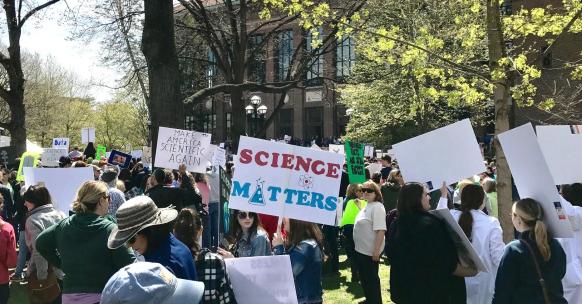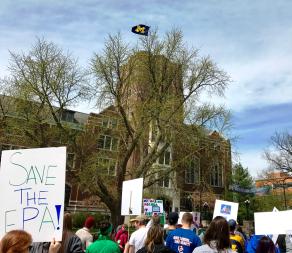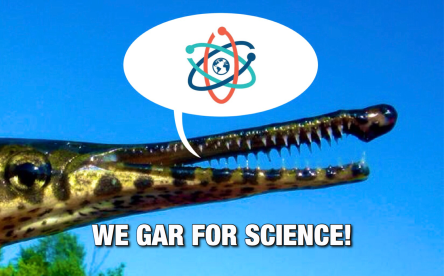
“Due to fiscal uncertainty under the new incoming administration, we will not be renewing your contract in 2017.” This was the message I received from my employer (a federal research lab) mid-November 2016, giving me little time to find a new job as an early-career fish ecologist. I felt like a casualty of what’s been dubbed “the war on science.” Many changes have already arrived since November, and it seems there’s no shortage on the horizon.  Several articles have covered the removal of climate change from government websites, proposed cuts to the Environmental Protection Agency, and the suggested elimination of NOAA’s Sea Grant program; even the National Science Foundation and National Institutes of Health are not immune to funding reductions.
Several articles have covered the removal of climate change from government websites, proposed cuts to the Environmental Protection Agency, and the suggested elimination of NOAA’s Sea Grant program; even the National Science Foundation and National Institutes of Health are not immune to funding reductions.
How can we respond to these changes, showing resilience not only as scientists, but also as citizens during a climate of increasing political polarization? I don’t have all the answers, but I can speak from my own experience and pose some questions as we march forward.
Science communication has become increasingly important, with more scientists working to engage non-scientists by sharing their research. The Fisheries Blog co-organized a symposium on social media and science communication at the national American Fisheries Society meeting last year, and many other efforts have developed in 2017. But is explaining science to non-scientists enough? A recent article suggests we need to bring a more human element to science communication, “appeal to emotions” in the discussion (something scientists aren’t always the best at conveying, just read a typical journal article). While I believe explaining science is still a vital component of science communication, including why science is important to us, as both scientists and even more so as people, is a necessary step. For many who read The Fisheries Blog, science is our livelihood.

This past weekend saw the first March for Science. Arguably the largest scientific gathering [period!], thousands of people across 600+ events worldwide joined together in a visual demonstration of support and celebration of science. The days leading up to the March for Science were not without controversy, but the event itself was both successful and truly inspiring. Although high-profile speakers and clever science-punning signs took center stage with media attention, what was most inspiring to me was the participation of so many non-scientists; truly indicating that people care about science and support the work many of us pursue. It would be great if we didn’t need to march for science, but after personally struggling with the repercussions of November, marching among peers and non-scientists alike was a viscerally uplifting experience.

What’s next? How do scientists use the momentum garnered from the science march to continue moving forward? Maintaining public engagement and accessibility to science continues to be fundamental, and effective (and creative) science communication is vital. Within the science community, and fisheries science is no exception, we need to continue promoting diversity. We need to move beyond “old white men in lab coats” as the default visual of a scientist. We also need a positive, albeit realistic, message for the next generation; you can become a scientist, but know the road ahead is fraught with challenges. These are only a few questions and objectives that come to mind, and it’s up to all of us to harness the (hopefully renewable) energy of the march to continue advancing science on multiple fronts. Science itself is a slow process, but engaging people with the value of science doesn’t need to be. Time is short; to quote one of the popular signs seen at the March for Science “there is no Planet B.”
Note: The opinions expressed in this post are those of the author, and do not necessarily represent those of the Fisheries Blog team.

In my observations over the years, many people in our field start out in temporary situations. This may continue for years. In the 1980s I timed out in my position after 2 years and had to leave. A friend then fill my position (it was not a funding issue, it was the rule). I have seen this play out in many different ways over the years. When taking a job it is important to understand the situation and the personnel rules.
I agree that it is important for us to communicate our work to the public. Having worked in several agencies (Federal, State, Tribal, City), I have noticed that public outreach is often not an agency priority. So, I have often volunteered with outreach groups, to try to share information about fish.